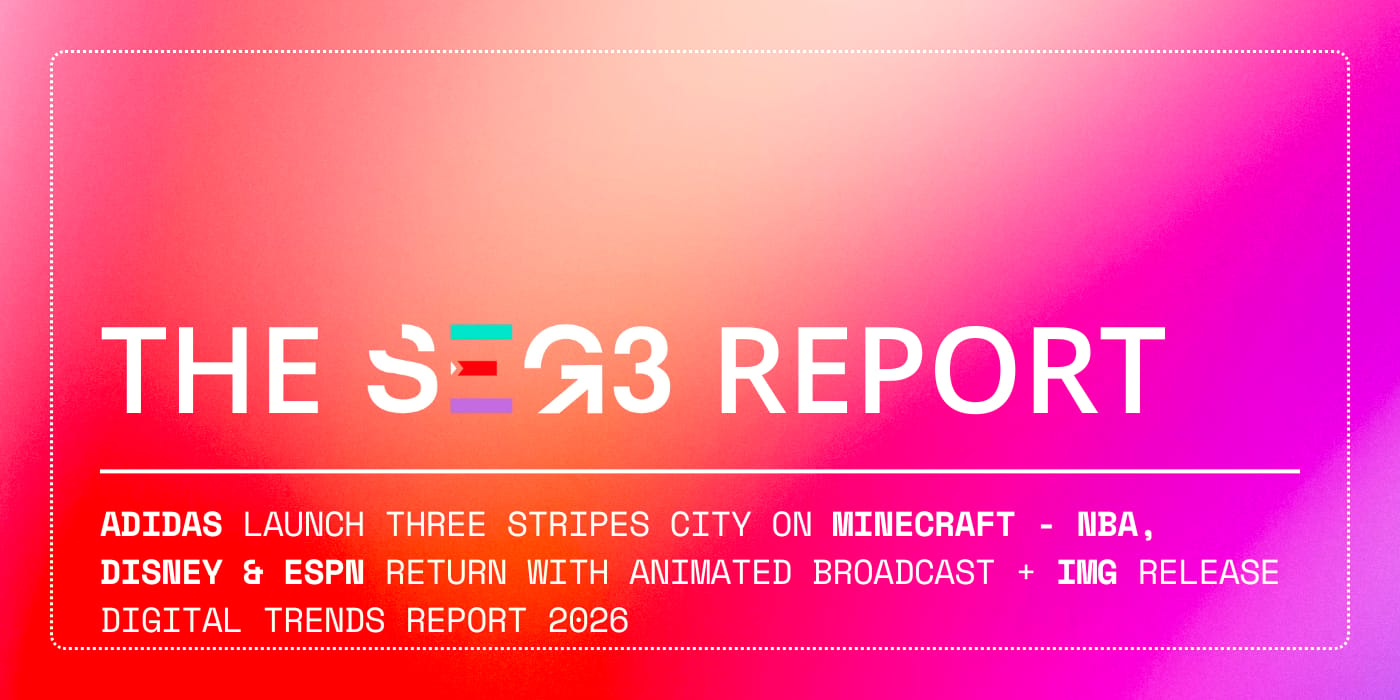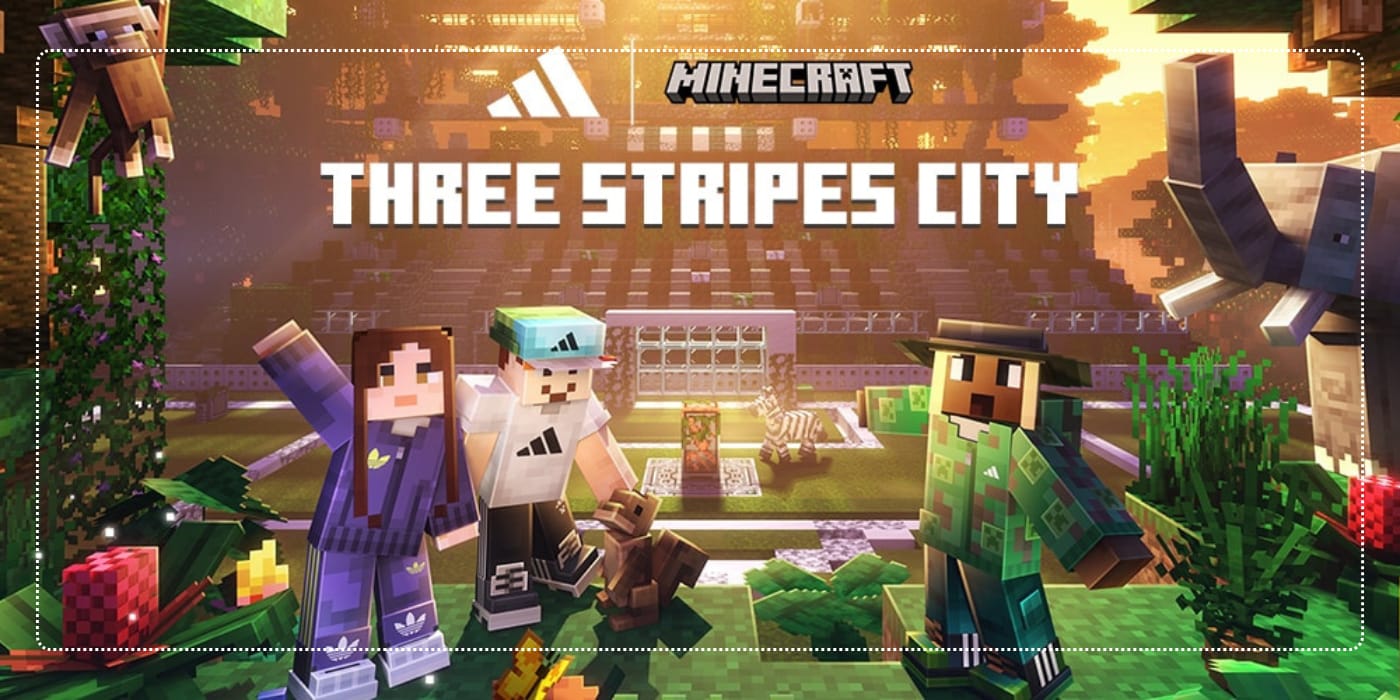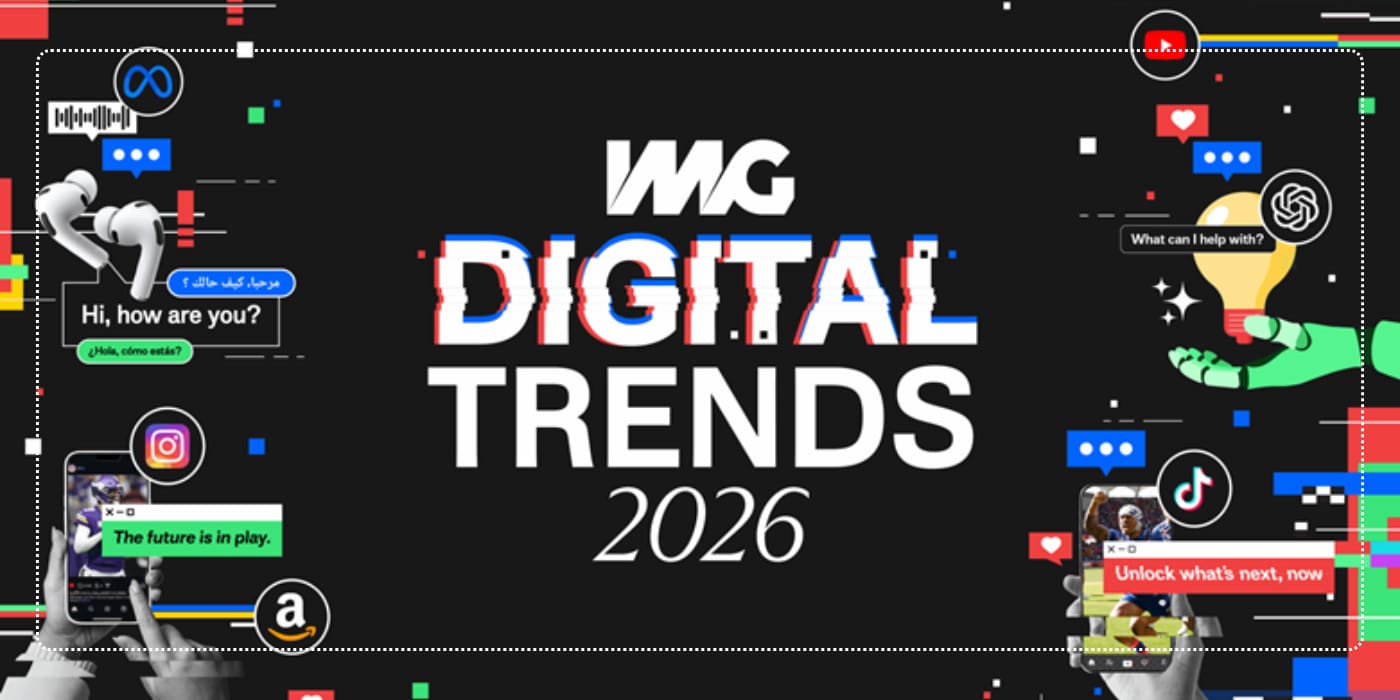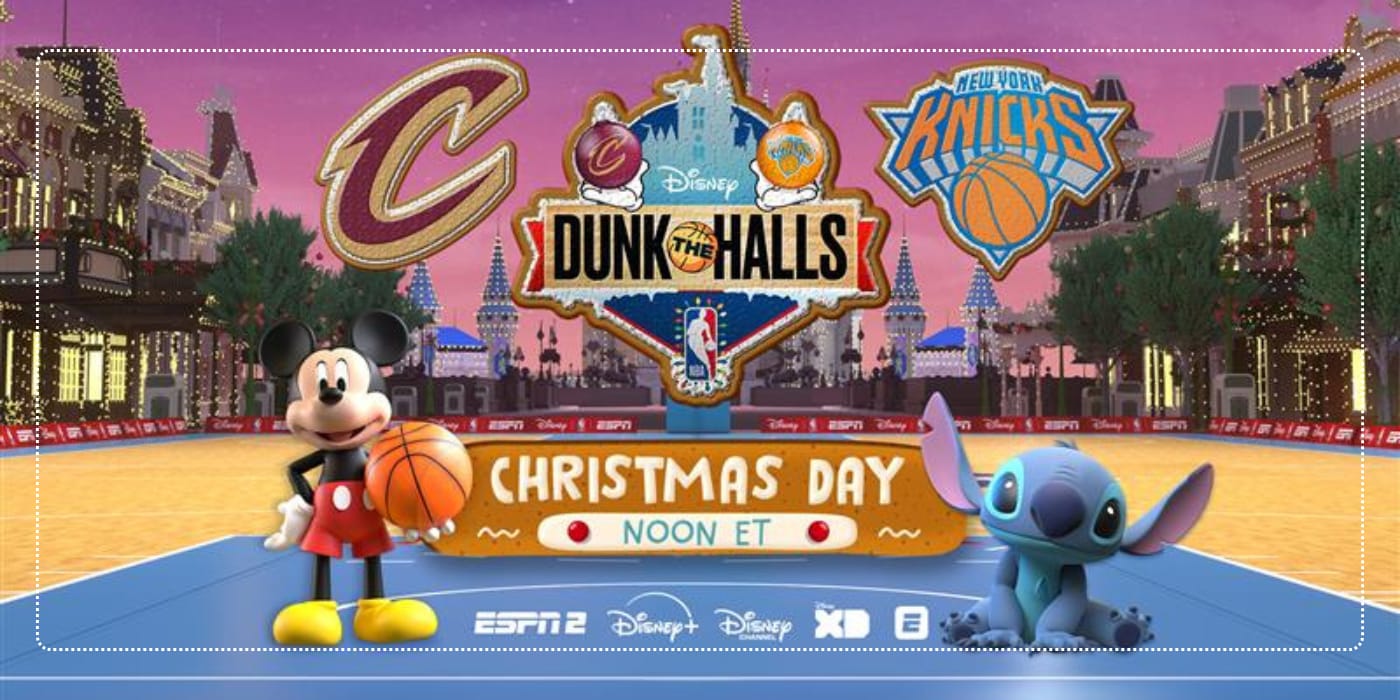- The SEG3 Report
- Posts
- How Adidas are connecting Minecraft to their loyalty program
How Adidas are connecting Minecraft to their loyalty program
& NBA, ESPN & Disney gear up for the return of animated broadcasts + IMG release Digital Trends Report 2026
Hey everyone. Edition #87 of The SEG3 Report checking in.
Today’s edition takes a dive into Adidas’ launch of Three Stripes City on Minecraft, and how they are funnelling players from the platform to their membership offering, adiClub.
We then also spotlight some of the key takeaways from IMG’s Digital Trends Report, along with a look at the upcoming animated broadcast from ESPN, Disney & NBA for the Christmas Day game by looking back at the 2024 version.
A final pre-thanksgiving reminder that SEG3 Los Angeles is now just 2 weeks away 🤯
Epic Games, EA, LA Clippers, Dentsu, Paramount, Publicis, Blizzard Entertainment & many more of the leading sports, entertainment, gaming & lifestyle brands have secured their places over the past 48 hours. Grab one of the final few spaces alongside them ⤵️
Adidas launches Three Stripes City in Minecraft; connects to adiClub membership & CRM
adidas has rolled out Three Stripes City - a new, free world in the Minecraft Marketplace packed with fresh biomes, animals, blocks and custom structures. Players can jump into sporty in-game challenges, pick up loot and build armour sets inspired by real adidas gear. The world works in multiplayer too, with extras like “adidas Adventurers”.
TL;DR:
The adiClub integration makes it possible to turn play into loyalty - capturing first-party data of players from the platform-owned audience.
The blending of IRL & URL experiences and rewards deepens engagement on both sides.
The winning strategy is using platforms for distribution, yet finding smart ways to motivate those fans to become part of your ecosystem so you have the direct relationship.
If you think about the intersection of sports and lifestyle, I’d bet Adidas are one of the first names that springs to mind.
They’re synonymous with everything sports, from the very elite of Arsenal (hello Tottenham fans!), all the way down to grassroots. But they have also been simultaneously extending their reach into wider culture through partnerships with the likes of Samuel L. Jackson, Stormzy, Cardi B and more.
And if you’re trying to be part of the cultural zeitgeist, it’s impossible to avoid gaming.
Adidas have been one of the more active non-endemic brands across the gaming ecosystem - with recent activations in Roblox (with Orlando Pirates for Halloween), collabs with the Esports World Cup & 100 Thieves, in-game items/cosmetics in Fortnite, and even a dabble in The Sandbox.
But today’s piece focuses in on Adidas’ recently launched world in Minecraft.
Why should you care?
There are three moves from Adidas as part of this launch that I think are worth noting - these being:
1 - Understanding Minecraft and its culture
The initial partnership between Minecraft & Adidas was in March of this year, meaning they have taken the time to understand the platform and the audience, and have now designed the world to integrate Adidas’ DNA where it has a fit, with things like:
New structures, including full sports facilities
New biomes to explore and build in
New animals and companion characters (they have zebras with 3 stripes - simple, but fun)
And craftable adidas gear…
Which brings me onto the next point:
2 - The merch opportunity
The launch of the world expands upon the earlier partnership between Adidas & Minecraft, where they launched footwear and apparel around the time a Minecraft Movie was on the big screen.
As we’ve discussed many times on this newsletter, merch can be a great tool for storytelling, and in this case, it was the main connector between the in-game activations and real-world product.
That was until now, when they have added a new layer…
3 - The linking of adiClub
adiClub is Adidas’ free membership program, which allows members to get points for purchases, which then unlocks perks as you rise up the rankings. You know, as every loyalty program does.
Where it gets interesting is they have now tied in this program into Minecraft, with the whole experience fully connected into their CRM ecosystem - giving players a direct path into adiClub and the broader adidas universe.
Alongside this, members are able to redeem their adiClub points for Minecoins, and claim a limited-edition Trefoil Wings character.
This blending of realities, where digital engagement translates into IRL rewards, and vice versa, really is the ultimate end game for consumer brands that have so many touchpoints. And now with the integration of adiClub, Adidas can transform their presence in Minecraft into an audience growth tool too.
And that’s important, because with any platform, whether that be X or Instagram, or Roblox, Fortnite & Minecraft, whilst they are incredible in helping to get your brand or IP in front of an engaged, global audience - they own the relationship and thus are the ones capturing the majority of the value.
Building a strategy that uses these platforms to reach new audiences whilst then giving those audiences a way to step further into your ecosystem is a smart game plan that helps Adidas shift from a rented audience to an owned one.
And that’s the sweet spot that every brand or IP owners needs to find.
Closing Thoughts
Adidas took time to understood Minecraft culture, only added to the experience where their brand had a good DNA fit, connected their presence to something bigger (Minecraft Movie), and now are giving players a clear path into their world through adiClub.
If you can do those four things; add value, fit the platform, connect to IRL culture and events, and build a bridge into your own ecosystem, you’ll be putting the right foundations in place for something that feels authentic and can grow over time.
IMG release Digital Trends Report 2026
IMG has released its Digital Trends Report 2026, covering the technologies and shifts it expects will influence the sports and media space for rights holders in the year ahead - focusing in on changes in content distribution and consumption, discovery in the AI era, the power of creators & more.
TL;DR:
Content output must be high-volume and high-quality; brands must be visible everywhere all the time.
Short-form is vital for discovery; longer formats are vital for deeper engagement.
AI agents and zero-click outcomes (where fans don’t manually search) are to become a normal part of the fan experience.
Platforms are prioritising creator voices; right-holders need to harness the energy of fan-creators to drive growth of their IP/brand, rather than a shut down approach.
RedNote has evolved into the primary search-and-discovery engine for Gen Alpha - merging social, shopping and lifestyle. This super app trend is heading West too.
The Digital Trends Report from IMG has just been released, and delves into a lot of topics that we’re frequently opining on; the changing face of content distribution and consumption, how to be discovered in the AI era, the power of creators & much more.
So, what were the key findings, and how can they help advise your 2026 strategy?
There are 7/8 segments as part of the full report, but we’re going to focus in on three sections; these being:
1 - Short-form content vs long-form
There’s been a lot of conversation about the shortening of attention spans for youth audiences. This is a myth, and it is in fact an interest span that dictates people’s attention.
The thing that has changed however is that audiences are fragmented (monocultures are long dead), so discovery (which we’ll touch on later on) has become a big challenge.
So, how should your content strategy be built to tackle this?
→ Short-form content - this becomes your the attention engine (i.e. being a consistent part of your fanbases media diet across their platform of choice).
→ Long-form content - this becomes the tool to drive fans deeper into your ecosystem, or as Iain Liddle of IMG says, “convert viewers from simply curious to those who care”, which is phrasing I like a lot.
Sports publishers must remain cognizant of the need to use vertical video content to point audiences towards what else they should see or know. This often means longer formats or franchises that offer deeper storytelling and convert viewers from simply curious to those who care. Take advantage of your appearance in someone’s scrolling session but ultimately try to extract your community from it
2 - Communicating through creators, and the difference between infringement & fan amplification
As the tools for creating UGC (whether that be video or games) get easier and more widespread, we’re seeing that making things is now becoming a core part of how fans want to express their passions.
Lean into that behaviour - don’t shut it down.
If a sport already has a buoyant creator ecosystem that’s producing content around it – or even just a fledgling one – actively work with them. This means giving access to content (and whitelisting their channels so you don’t strike claims against them) and to your athletes and venues.
If harnessed properly (like in the example of Lionsgate, which we covered in edition #82), IP owners and brands can significantly increase their production capabilities, improve discovery by new audiences, and create content that is more in-keeping with the fan culture built around their property (because it’s coming from those within it!).
But if fan amplification is viewed in the same light as infringement, and is met with a takedown mentality (like in the initial reaction of UEFA & their content partners to the Scottish Football Supporters Association), it just creates a disconnect between the fan and their passion point, and means you lose out on a production engine that could’ve helped grow your sport, brand or IP.
It’s a fine line, but not one you can afford to get wrong.
3 - Handling discovery in the AI era
And finally, if we are to enter into an era of agentic AI searches, where consumers entrust agents to discover and transact on their behalf, all within the browser, then being part of the options that are presented to consumers will be extremely important for growth.
(I do caveat this with the assumption that big tech will also be looking to create advertising opportunities for this process too).
In any case, the question becomes what tweaks do you need to make to your content so AI systems understand it, rank it and recommend it, consistently?
The report suggests to:
1 - Own the topics no-one else covers
The internet is flooded with match reports and transfer rumours, but very few outlets write in depth about rules, governance or stadium information.
That’s a gap where federations, leagues and clubs can and should become the primary cited authority, which can give people an entry point to your site.
2 - Get your technical hygiene in order
Things like schema markup on your website (i.e. FAQ’s), and making sure your apps support Apple/Android intents are now baseline requirements if you want AI systems to pull from your content rather than someone else’s.
3 - Push your third-party partners too
Most purchase journeys in sport run through ticketing or retail partners, so have those detailed conversations with them about how they’re preparing for agentic transactions.
4 - Check what AI is already saying about you
Get into the process of a quick monthly audit so you can spot wrong answers and fix them by publishing clearer, authoritative content for AI to pick up.
Closing Thoughts
The five pillars that brings together all the industries within our community are around IP, brand, content, fandom & data - and they are all being reshaped by new platforms, new behaviours and new technology.
This makes staying across these shifts mandatory. It’s the only way to stay ahead of culture rather than reacting to it.
Because if you can understand how audiences discover, share and engage today, and build to meet those emerging behaviours of tomorrow, your brand, sport or IP will be in a much better place to succeed in 2026 and beyond.
NBA, ESPN & Disney animated broadcasts return
This Christmas day, the Cleveland Cavs vs NY Knicks will be presented as a real-time animated broadcast via a partnership between Disney, ESPN and the NBA. The production uses Beyond Sports visualisation and motion tracking tech, delivering the game in a festive “Main Street” setting at Walt Disney World Resort, and includes well-known characters such as Stitch, Mickey Mouse and others.
Rather than re-skin what we wrote about for this in 2024, I’d recommend checking out Edition #39, where we dive into the first-round of the animated broadcasts from last year - diving into the drivers for this type of broadcast, the technologies underpinning it and the long-term viability.
In other news this week:
Warner Music Group partners with Stability.ai to build responsible AI tools: read here.
Suno has spent just $2,000 whilst training its AI music model, with the rest on compute: read here.
Adidas also launch animation pack contest for Roblox: read here.
PayPal partners with Liverpool FC as Official Digital Payments partner: read here.
Virgin Media O2 partners with Epic Games to bring Fortnite rewards to Priority members: read here.
Applications for Tennis Australia’s AO Startups program 2026 closes this week: apply here.
Warner Bros & Cosm partner to bring Harry Potter to venues: read here.
ATP Tour release anime content piece of Taylor Fritz: read here.
Epic Games & Unity partner to bring games made by Unity’s engine to Fortnite: read here.
CAA buys brand licensing agency Beanstalk: read here.
GEEIQ launches integration network: read here.
Stats Perform launches Sports Fan Engagement, Monetisation & AI trends: read here.
Working on anything cool, or have a press release you would like us to cover? Send it in for the chance for it to be covered in next week’s edition!
What'd you think of the SEG3 Report? |
That’s all for now everyone - thanks again for reading the latest edition of The SEG3 Report, and if you found it of interest, please do consider sharing with a colleague or friend!



